- Home
- Technical Cooperation Projects
- Index of Countries
- Asia
- Cambodia
- The Project for National and Sub-national Capacity Development for Sustainable Natural Resource Management
- Project News
- Study visits to protected areas for learning management plan development
Project News
2022-06-10
Study visits to protected areas for learning management plan development
Under the policy support component, enhancing the national and sub-national staffs' capacity for developing protected area management plan is one of the major tasks for the project. As of now, more than 70 protected areas have been established in Cambodia covering 41% of the land. However, most of those protected areas have not yet formulated its own management plan due to the lack of capacity of national and sub-national authorities of environment sector, which has been a critical issue to be addressed for implementing the sustainable natural resource management in protected areas. In order to change such a situation, the project is expected to train the staffs, mainly of Ministry of Environment (MoE), so that they can be equipped with necessary skills to develop management plans for protected areas.
Since it is crucial to study from the experiences and lessons learned from the advanced ones, the project organized field visits to protected areas which have already developed the management plan through a formal procedure. The main purpose of the visits is to collect information of formulating and implementing the management plan which would be useful for the project to develop the training curriculum.
In November 2021, the first field visit to protected area was carried out by the project team including officials of the Department of Terrestrial Natural Protected Area Conservation (East of Mekong River) of MoE and JICA Experts setting Phnom Kulen National Park (PKNP) as destination. PKNP is one of the protected areas in Siem Reap province and the first protected area in Cambodia that has a management plan developed, though the zoning has not been completed. This national park has been facing various challenges that threaten the valuable biodiversity and forest resources such as land encroachment, unregulated land transaction, limited budget for law enforcement and worsening waste management in the area. This visit allowed the project to study how the National Park had utilized its management plan and what efforts were in store to ensure the continued implementation of activities, while the importance of sustainable financial resources and well-coordinated zoning of the protected area has been revealed through their challenges.
The second field visit by the project team comprising the officers of the same department and a JICA Expert took place in May 2022 to Keo Seima Wildlife Sanctuary (KWS) and Srepok Wildlife Sanctuary (SWS) in Mondulkiri province. Due to the unique conservation value, the KWS and the SWS have been supported by International Non-Governmental Organizations for the management plan development both technically and financially since the preparation phase until the final approval process in the government. In addition to this, they've also received assistance from the partners in monitoring activities to ensure the efficient implementation of the management plan. According to the directors of the sanctuaries, the challenges in formulating the management plan are: time-consuming preparation phase with the local authorities and working group, technical and financial support for conducting biodiversity research as well as inventory and zoning, and coordination of conflict with local people regarding their tenure rights within the wildlife sanctuary. They also said, even though the KWS and the SWS have its own management plan which includes all the detail activities and proposed budget, some activities have been put on hold due to the budgetary constraints. In addition, since zoning of KWS has not been approved by the government, the law enforcement against land encroachment is being limited without strong legal base.
In the following process of this task, based on the result of the first and second field visits, the project will develop a training curriculum on how to formulate the protected area management plan incorporating the challenges and lessons learned from the three protected areas.
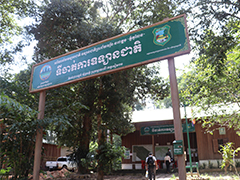 Entrance of PKNP station
Entrance of PKNP station
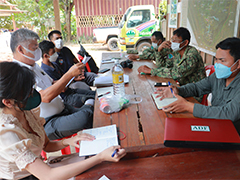 Interview with PKNP staff
Interview with PKNP staff
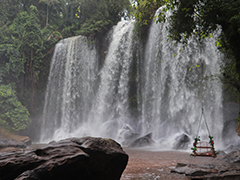 Mountain stream with spectacular waterfall attracts many tourists to PKNP
Mountain stream with spectacular waterfall attracts many tourists to PKNP
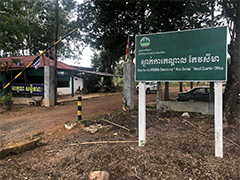 Main entrance gate of KWS
Main entrance gate of KWS
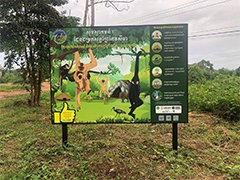 Billboard established in KWS
Billboard established in KWS
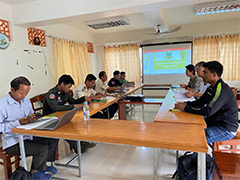 Interview with KWS staff
Interview with KWS staff
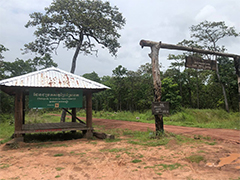 Main entrance gate of SWS
Main entrance gate of SWS
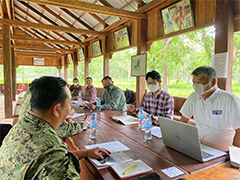 Interview with SWS staff
Interview with SWS staff
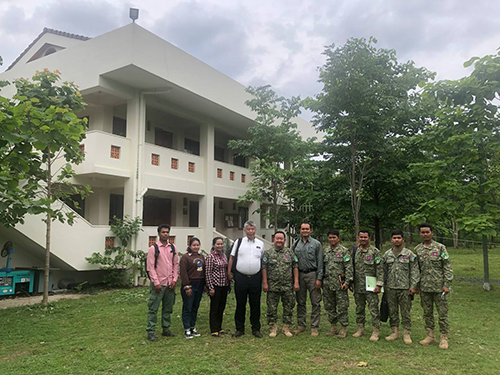 SWS HQ building was built under grant aid from Japan in 2014
SWS HQ building was built under grant aid from Japan in 2014
- About JICA
- News & Features
- Countries & Regions
- Our Work
- Thematic Issues
- Types of Assistance
- Partnerships with Other Development Partners
- Climate Change / Environmental and Social Considerations
- Evaluations
- Compliance and Anti-corruption
- Science and Technology Cooperation on Global Issues
- Research
- JICA Development Studies Program / JICA Chair
- Support for the Acceptance of Foreign HRs / Multicultural and Inclusive Community
- Publications
- Investor Relations
